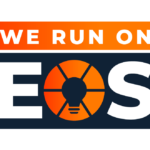In 2016, the Bureau of Labor Statistics (BLS) reported that 991 construction workers died on the job, with 39% of those resulting from falls. In 2017, fall protection was (again)the most frequently cited standard by OSHA. (Source: www.OSHA.gov). To help in the fight against those numbers, we want to draw your attention to an important piece of life-saving, fall protection equipment: the harness.
When outfitting your people with harnesses, you’ll need to consider these things: function, features, and fit.
Function and features are determined by considering your application; tower climbing, construction, wind energy, arc flash, welding are just a few examples of harnesses that are designed for specific industries. Start with how many Dorsal Rings or “D-Rings” you’ll need. At a minimum you’re picking a back-d (for fall arrest) but you can expand that to include side-d (for work positioning only) and/or front-d (for fall arrest, work positioning, rescue, and ladder climbing). D-Rings can come in uncoated steel, aluminum (standard), or PVC coated steel, aluminum (more common for Arc applications). From there move to the padding, a feature that’s optional but makes it more comfortable to wear. You can get that in various locations like the back/hip, shoulder/back/hip or shoulder/back and leg. If your people wear them every day for hours on end, look for lighter, breathable padding (it’s worth it). Next, draw your attention to the webbing. Available in Polyester, Nomex/Kevlar, or Nylon, your choice depends on the application. If your people are working in arc flash for example, they will need a material other than the standard polyester like Nomex/Kevlar. For the buckles, used to secure the legs, waist and chest, pick those based on
budget and/or preference: tongue buckle (like the belt you wear), pass-thru/mating (cheapest) or quick connect (easiest, can be released with one hand).
Other features that are in the marketplace include trauma straps (for placing the leg in a strap when in a fall at height to help reduce trauma), lanyard keepers (to secure the hooks of lanyards to avoid tripping), and seat slings (for comfort, typically in tower-climbing scenarios).
Fit is crucial and can be best done by following these steps:
- Have your workers grab the harness by the back-d and shake (the harness, not themselves).
- Release all buckles and slip on the harness so the d-ring is in the middle of the back between the shoulder blades.
- Connect the waist strap so it’s tight but not binding.
- Pull the left leg strap between the left leg and connect it to the opposite end of the leg strap, repeat on right leg. These should be tight enough for only two (2) fingers to fit between the legs and the straps.
- Connect the chest strap so the buckle’s in the middle of the chest, tighten till taut.
Prior to use each day, the user is required to inspect their personal full body harness. When checking the webbing: bend the webbing in a “U” shape to look for frayed edges, broken fibers, pulled stiches, cuts, burns and chemical damage. There should not be any extra holes in the webbing nor should there be sharp edges that might snag the webbing and cause fraying. For the D-Ring: inspect the D-Ring for distortion, cracks, rough or sharp edges and ensure it moves freely. On the buckles: look for any unusual wear to make sure there are no frays, cuts or broken stiches where the buckles attach to the webbing. The tongue buckles or grommets of the harness should not be distorted or broken. Fall indicators: If the harness has its fall
indicator out, inspect the harness for signs of activation as it may have encountered a fall. If any of these concerns show up, get it out of service ASAP. (For a free harness inspection guide, visit the “Downloads” section of www.emergentsafety.com under “Resources”.)
None of this matters however if the equipment is not going to be taken care of. Maintain and clean the harness by using luke-warm water with dish soap and be sure to rinse the harness completely of the soap before allowing it to dry. DO. NOT. STORE. IT. WET. Store the dry harness in a cool, dry, dark area away from chemicals, corrosives, high humidity, sharp objects, and UV light/radiation. (PRO TIP: Hang it by the D-Ring when not in use to help the harness keep its shape.)
Always ask yourself when selecting fall protection, or any PPE really, “What are we doing with it? What features does it need to have? Does it fit the teammate using it? How do we keep it in good shape?” The answers to those questions help ensure the right equipment is available and worn to keep your workers safe and to get the job done.
For more information on your personal fall arrest or safety supplies, contact Jay Wilkin at Emergent Safety Supply.
Phone: 630-878-0363
Web: www.emergentsafety.com


